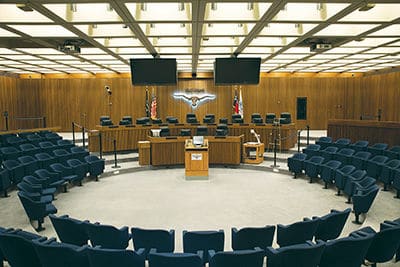The Fort Worth City Council began, again, to wrestle with the bear that is the pension fund at its Aug. 7 meeting.
The City of Fort Worth’s pension fund is on a path to insolvency with a liability of about $1.6 billion. There are many reasons for this, but the bottom line is that the plan needs to be fixed.
City Manager David Cooke presented the council at its work session with the first steps toward resolving the dilemma.
“If we don’t do anything, this fund runs out of money at some point in the future,” Cooke told the council.
“We have a duty to our employees and our citizens to fix this here in Fort Worth,” Mayor Betsy Price said. That would avoid possible action by the Legislature.
Price and the council have made progress over the past several years by increasing city contributions and changing the benefit structure for new employees and current employees from that point forward.
These changes, however, have not been enough to pay for the benefits accrued prior to those changes.
Price noted that had changes not been made, the liability would currently be more than $3 billion.
The problem is that benefits given over the years were not sufficiently funded by contributions to the fund and the fund has not met the projected returns on its investments.
A Pension Review Committee has studied the situation for two-and-a-half years. Although no consensus was reached by the committee, Cooke made a recommendation to put the plan on a track to sustainability.
The recommendation includes additional contributions from city taxpayers, increased contributions from employee, changes to eligibility, such as establishing a minimum retirement age, and changes to employees’s and retirees’s cost-of-living adjustments (COLAs). The proposal would amount to putting about $48 million more per year into the pension fund above the current approximately $90 million being put into it.
The approximate $48 million annually is equal to about 10.5 percent of the city’s payroll per year. Cooke recommended an increase of 3 percent in city contributions, an increase of 2.3 percent in employee contributions, and a 5.2 percent decrease in benefits and eligibility.
As the discussions continue, these are some considerations:
– General employees prefer different amounts of contributions for time in service, with employees hired before the previous changes paying more into the fund.
– Police and fire personnel prefer blended contribution rates no matter the time in service.
– Police want to maintain the 25 years-and-out retirement provision and contributions to a level to preserve benefits.
– The city is considering increasing its contribution level to 3 percent.
– COLA changes have to be part of the solution, and retirees want to preserve the COLA.
Discussions will continue during city council budget workshop sessions before the council is expected to take action on Sept. 18. In November, city employees are expected to vote on the plan. If approved, the changes will be implemented from January through May of 2019.
“The solution we support will most likely be the most emotional and the most important decision that the members of this council will face, possibly during their term in office,” Price said.







